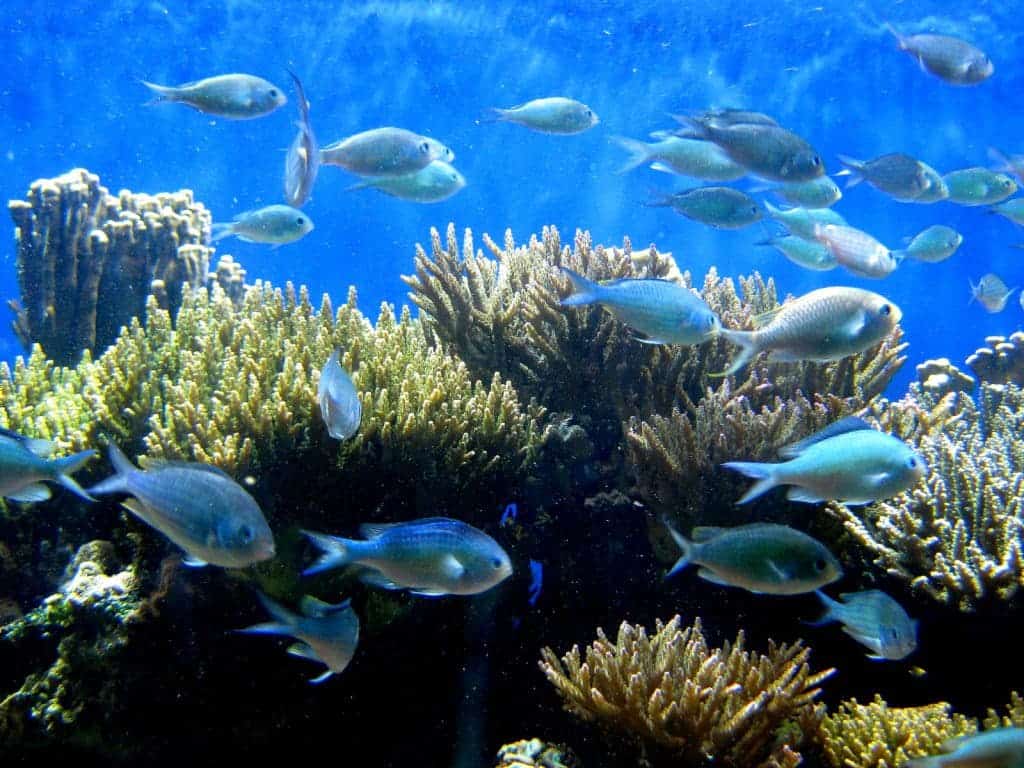Every day, fish around the world’s ocean eat microplastics — small, barely visible pieces of plastic that are formed when larger plastic objects like food containers break down into smaller bits. This has been going on for a while, but researchers weren’t exactly sure how long.
Now, researchers at the Loyola University Chicago looked at the guts of freshwater fish preserved in museum collections. They found that fish have been eating microplastics since the 1950s and that the concentration in their guts has only increased over time.

“For the last 10 or 15 years it’s kind of been in the public consciousness that there’s a problem with plastic in the water. But really, organisms have probably been exposed to plastic litter since plastic was invented, and we don’t know what that historical context looks like,” Tim Hoellein, co-author of the study, said in a statement.
Previous studies have shown that eating microplastics can cause aneurysms and reproductive changes in fish, as well as affect the cognitive performance of hermit crabs and weaken the physical performance of mussels. There’s also evidence of microplastics travelling up the food chain and having potential effects on humans. We’re not sure just how bad microplastics are, but they’re almost certainly not good for you.
Hoellein and his team wanted to understand how microplastics have built up in the ocean over the past century and what that meant for the fish of the past. They realized the best place to go was Chicago’s Field Museum, where around two million fish specimens are preserved in alcohol and stored in an underground collection.
They focused on four species in particular: largemouth bass (Micropterus salmoides), channel catfish (Ictalurus punctatus), sand shiners (Notropis stramineus), and round gobies (Neogobius melanostomus). The four of them have records dating from 2017 back to 1900. The researchers also collected fresh samples of the species for the study.
“We would take these jars full of fish and find specimens that were sort of average, not the biggest or the smallest, and then we used scalpels and tweezers to dissect out the digestive tracts,” Loren Hou, the paper’s lead author, said in a statement. “We tried to get at least five specimens per decade.”
To actually find the plastic in the fishes’ guts, the researchers treated the digestive tracts with hydrogen peroxide – a substance that breaks down the organic matter but leaves plastics intact. Then they also used microscopes to identify the materials with suspiciously smooth edges that might be indicative of microplastics.
The findings showed that the amount of microplastics in the fishes’ guts increased significantly over time as more plastic was manufactured and built up in the ecosystem. There were no plastic particles before mid-century. But when plastic manufacturing was industrialized in the 1950s, the concentrations skyrocketed.
While the researchers didn’t look at how eating these microplastics affected the fish, they wanted over digestive tract changes and increased stress — as seen in previous studies. They hope their findings will serve as a wakeup call to change our relationship with plastic and argued the purpose of their work is to contribute to solutions.
“Microplastics can come from larger objects being fragmented, but they’re often from clothing. Whenever you wash a pair of leggings or a polyester shirt, tiny little threads break off and get flushed into the water supply. It’s plastic on your back, and that’s just not the way that we’ve been thinking about it,” said Hoellein in a statement.
The study was published in the journal Ecological Applications.


